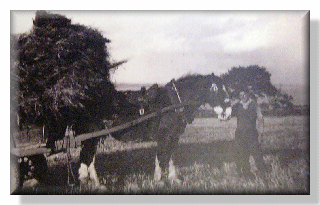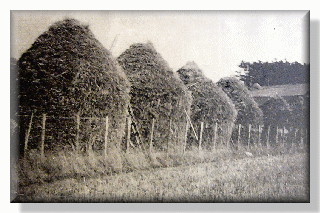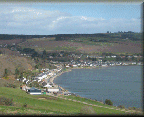Hay making was first carried out in the North in Moray in the early 18th century, but another century had to pass before the process became common.
When the hay was cut, it was turned to allow it to dry and then small “coles” about 3ft high were built. On some farms these were later made into larger coles, about twice as high, and allowed to stand for some time before being carried in huge cart loads to form stacks or sometimes larger “sows”. The hay in these was compacted by tackety boots. Dry hay was stored in a hay loft if available.
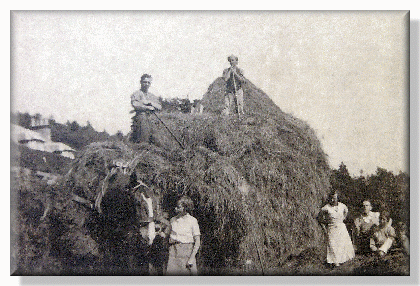
Stooks – the sheaves of corn were built into stooks and left there for a few weeks for the grain to dry and ripen properly.
Stooks varied in size from four sheaves on crofts to six or eight on larger farms.
They often pointed south or south west to allow the sun to dry both sides equally. The drying effects of the wind blowing through the stooks were very important. Sometimes sheaves were turned to allow thorough drying.

The picture shows stooks at the Drumnadrochit farm of the family of Mr Wilson, assistant manager of the Bank of Scotland, Fortrose.
When the farmer felt that the grain was dry, it was time for the “leading”. Frames were fitted to the side of the carts to allow for higher and wider loads. Leading began on the outside of the field and moved clockwise round it, from early morning to late at night.
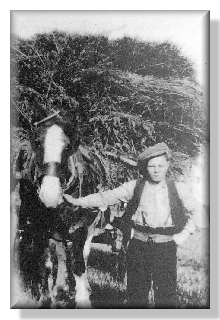
The Clydesdale moved from stook to stook as sheaves were forked on, and then from field to stockyard, where the horseman forked off his load for the stack builders.
